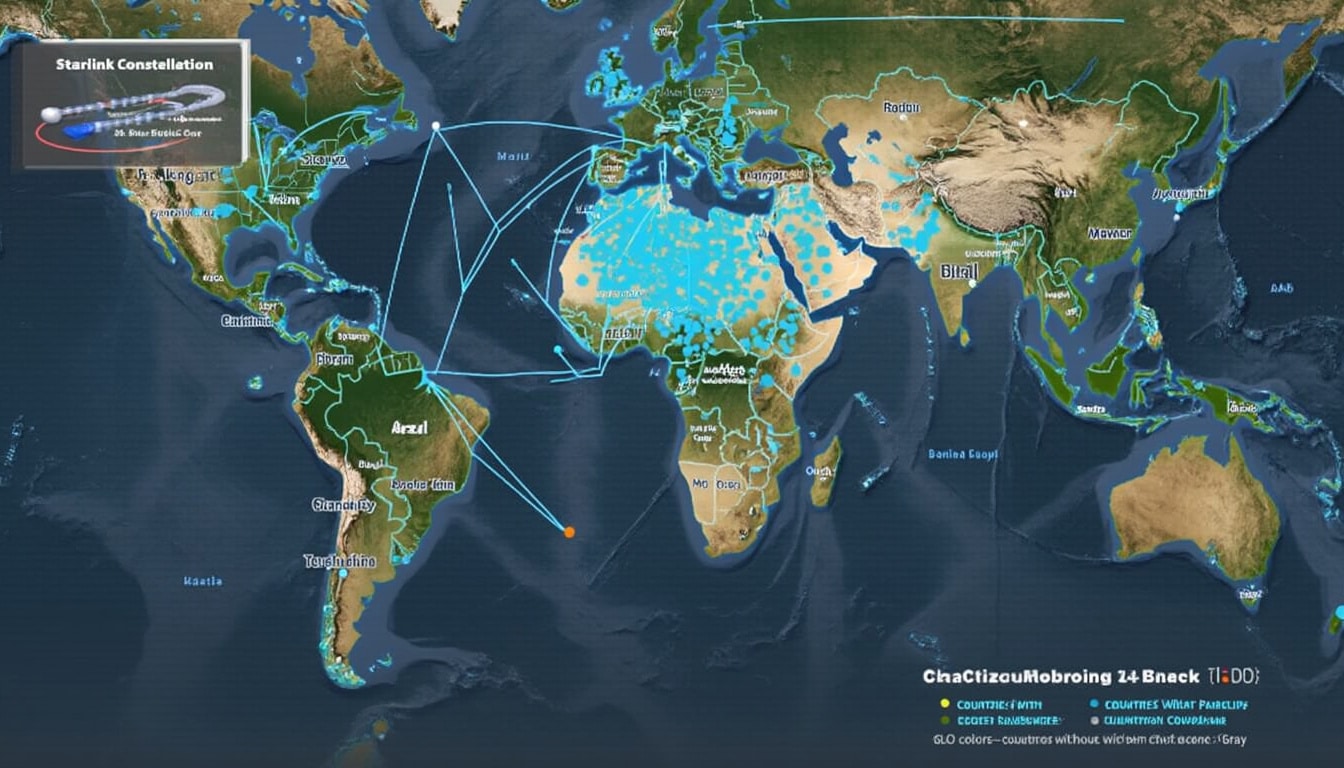The evolution of space exploration and satellite technology is currently dominated by innovative companies such as SpaceX, which is making significant strides with its Starlink project. These advancements are not only reshaping communication but also impacting industries worldwide. In recent developments, SpaceX has secured additional industrial space on the Eastside, aiming to expand its operations and production capabilities further.
As SpaceX continues to make waves in the aerospace industry, other major players, like NASA, Boeing, Blue Origin, and Virgin Galactic, are in heated competition to achieve their own ambitious goals in space. This article delves into the implications of SpaceX’s growth for the satellite internet market and the broader landscape of space exploration.
Expansion of Starlink Operations
SpaceX’s latest move to expand its Starlink operations by securing industrial space on the Eastside is a strategic decision aimed at enhancing its manufacturing and deployment capabilities. With the increasing demand for satellite internet services, this expansion is timely and necessary.

Understanding Starlink’s Role in Connectivity
The Starlink project aims to provide high-speed internet across the globe, particularly in underserved and remote areas where traditional broadband infrastructure is lacking. By deploying a constellation of satellites in low Earth orbit (LEO), SpaceX is breaking ground in satellite internet delivery, challenging traditional internet service providers (ISPs).
Although criticisms arise surrounding the environmental impact and space debris associated with satellite launches, the benefits of global connectivity often outweigh these concerns. Users across rural America and beyond are now able to access reliable internet, which can boost local economies and improve education and telehealth services.
Additionally, recent projects like the collaboration between NASA and SpaceX highlight the versatility of Starlink technology. For instance, the integration of Starlink with NASA’s initiatives reinforces the significance of broadband access in space missions and the overall monitoring of Earth from space.
The Competitive Landscape in Satellite Internet
As SpaceX scales up its manufacturing capabilities, it’s essential to acknowledge the competitive landscape. Companies like OneWeb and Northrop Grumman are also vying for a piece of the satellite internet market. OneWeb, for example, is focused on delivering broadband connectivity, while Northrop Grumman explores various aerospace technologies.
Furthermore, traditional players in telecommunications are adapting to this new space-based competition. Major ISPs are beginning to consider partnerships with companies like SpaceX and its Starlink network, as they recognize the potential to enhance their service offerings.
Looking ahead, collaborations between tech giants and aerospace leaders could redefine internet connectivity norms, paving the way for innovation and competition in a landscape once dominated by a few key players.
Starlink’s Impact on Global Internet Accessibility
Starlink’s mission goes beyond providing internet access; it aims to democratize data communication for everyone. With an increasing number of satellites being launched, SpaceX plans to optimize its satellite performance to ensure minimal latency and maximum connectivity.

Bridging the Digital Divide
The digital divide—an issue that has long persisted in various regions worldwide—affects millions who lack reliable internet access. Starlink’s service strives to bridge this gap by offering affordable internet solutions that cater to remote areas where conventional infrastructure is lacking.
For instance, the development of the affordable Starlink plan allows families in rural settings to gain access to high-speed internet at a fraction of the cost of traditional providers. This is a vital step in ensuring inclusivity in the modern digital economy.
Efforts to enhance global connectivity resonate with initiatives led by organizations like NASA, which explore coordination with satellite networks for enhanced space traffic management. The intertwining of space and communication technology promises exciting opportunities for global development, innovation, and growth.
The Future of SpaceX and Starlink Technology
As SpaceX continues to innovate in the aerospace sector, the integration of Starlink with upcoming technologies will play a pivotal role in shaping the industry’s future. Moreover, as the satellite network expands, the need for advancements in manufacturing and production is essential to meet the growing demand.
Manufacturing Enhancements and Job Creation
SpaceX’s establishment of a new production facility on the Eastside is set to create numerous job opportunities in the region. The expansion not only signifies boosting manufacturing processes but also serves as an economic catalyst, attracting talent and fostering industry growth in Texas.
Furthermore, collaborations with other aerospace giants, like Boeing and Lockheed Martin, could leverage specialized expertise in satellite design and manufacturing, which can enhance the performance of Starlink’s network.
The ripple effects of these developments could even open doors to partnerships between SpaceX and tech companies, creating new avenues for innovation that could inspire products we cannot yet envision.
Predictions for Space Industry Growth
Looking ahead, forecasts suggest that the demand for satellite services will climb steadily. Spearheading this growth are initiatives from Rocket Lab and Virgin Galactic, who, like SpaceX, aim to capitalize on the burgeoning space tourism and satellite launch markets.
With companies like OneWeb and other competitors entering the stage, a new era of competition is upon us. SpaceX will need to adapt continuously and innovate to remain a leader in the field.
As the industry evolves, the success of SpaceX and Starlink will be measured not only by profitability but also by its ability to improve global connectivity and ultimately enrich the lives of people across the globe.
Technological Innovations in Space applications
Embracing innovation is crucial for any company wishing to thrive in the competitive world of aerospace technology. As SpaceX continues its journey, the focus remains on integrating cutting-edge technologies that enhance the overall performance of its satellite network.

Future Developments in Satellite Design
With the ongoing enhancements in satellite design, SpaceX is at the forefront of innovation with its ongoing research and development efforts. Advances in materials science, for instance, could lead to lighter yet more robust satellites that enhance overall payload capacity and performance.
The shifts towards sustainable technology, such as using alternative propellants and energy-efficient systems, are paving the way for a greener aerospace industry. These innovations and design improvements may redefine how we view satellite deployments and their long-term impacts on the environment.
Collaborative Efforts and Global Partnerships
Sustaining the momentum of success relies heavily on collaboration. SpaceX continues to cultivate partnerships with governments, enterprises, and organizations beyond its existing network. The ability to work together will broaden the horizons of satellite communications and ultimately contribute towards a unified approach to managing space resources.
For instance, the prospect of combining Starlink’s fast-pacing technology with programs from international space agencies can foster enhanced coordination in space traffic management.
Conclusion
SpaceX’s expansion into the Eastside region marks a significant milestone for the company and the entire space exploration sector. With ongoing developments in Starlink technology, the focus on global connectivity, and efforts to bridge the digital divide, the future holds immense potential for innovation. The race between industry leaders like SpaceX and competitors such as Boeing, Blue Origin, and others only serves to propel advancements further, creating a dynamic and rapidly evolving landscape.
As we continue to witness the transformation of the industry, the possibilities seem endless, beckoning us to stay engaged with these revolutionary changes.




Leave a Reply